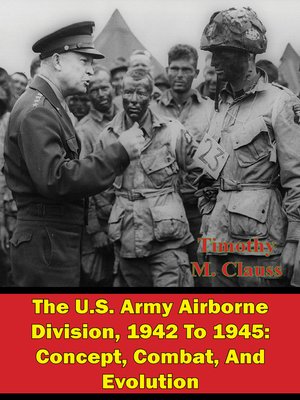The U.S. Army Airborne Division, 1942 to 1945
ebook ∣ Concept, Combat, And Evolution
By Timothy M. Clauss

Sign up to save your library
With an OverDrive account, you can save your favorite libraries for at-a-glance information about availability. Find out more about OverDrive accounts.
Find this title in Libby, the library reading app by OverDrive.



Search for a digital library with this title
Title found at these libraries:
| Library Name | Distance |
|---|---|
| Loading... |
In 1939, the U.S. Army had no formal combat formation capable of reaching the battlefield by air. In response to the success of German airborne operations, the U.S. Army formed a small unit of volunteers which was to experiment with airborne equipment and develop techniques. In the span of six years, the fledgling airborne concept expanded from a small platoon of parachute volunteers into five deployed airborne divisions composed of parachute and glider forces with a formal doctrine. This thesis examines the development of the airborne division through its employment in the Mediterranean and European Theaters of Operation, as these theaters employed four of the five U.S. airborne divisions during World War II. The doctrine, organization, and equipment of the airborne division changed significantly from its inception through the end of WWII. Personal influence, lessons learned from combat, and logistical limitations significantly affected the evolution of the airborne division.







